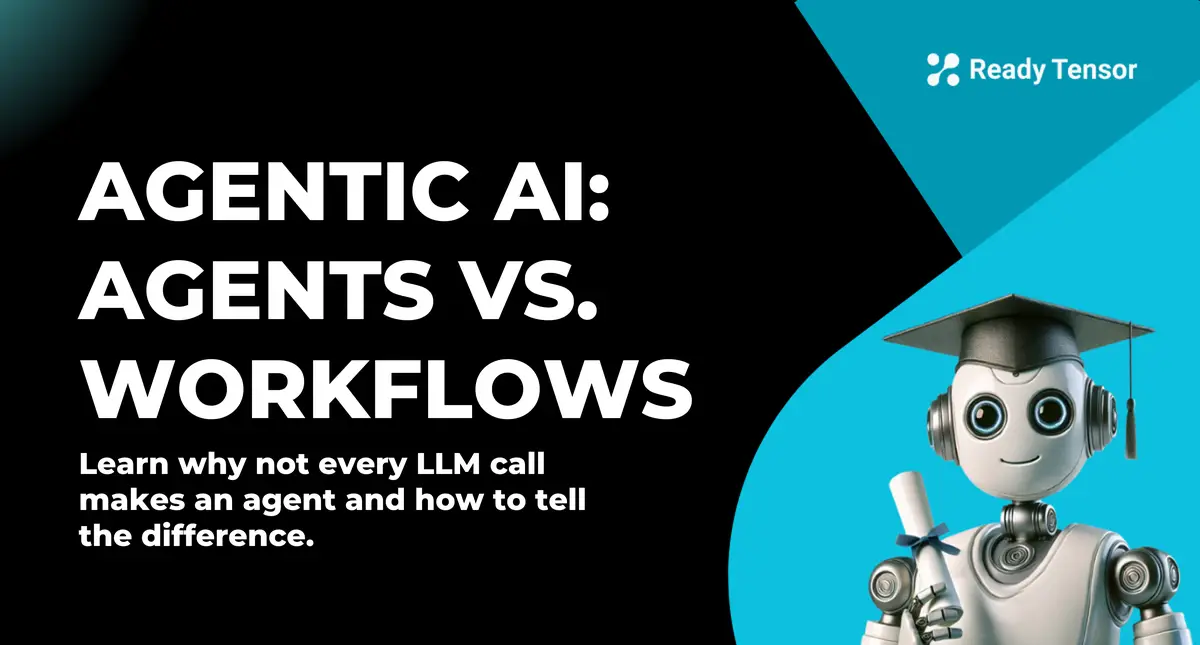
⬅️ Previous - Tools of the Trade
➡️ Next - Free APIs and Local LLMs
Before we continue with the course, it is important that we clearly distinguish an agent from a workflow, as this has become a point of confusion in the AI field. With everyone jumping on the bandwagon, it's become increasingly difficult to distinguish what truly constitutes an "agent" versus a more traditional workflow system. Let's break it down to bring some clarity to this often misunderstood distinction.
First things first. Just because you're making an LLM call doesn't mean you're building an "agent." This is perhaps one of the biggest misconceptions in the field today. According to Anthropic's research, working with dozens of teams building LLM agents across industries, there's a fundamental architectural distinction we need to understand:
Workflows are systems where LLMs and tools are orchestrated through predefined code paths. The process flow is predetermined by the developer.
Agents, on the other hand, are systems where LLMs dynamically direct their own processes and tool usage, maintaining control over how they accomplish tasks. They have autonomy in decision-making.
Think of it this way: in a workflow, you're the director telling each actor exactly what to do and when. In an agent system, you're simply providing the mission, and the agent decides how to accomplish it.
Before diving into building complex agentic systems, ask yourself: "Do I actually need an agent for this task?" This is because the most successful implementations aren't using complex frameworks or specialized libraries. Instead, they're building with simple, composable patterns that fit their specific needs.
Here's a practical way to decide:
True agents shine in open-ended problems where it's difficult to predict the required number of steps, and you can't hardcode a fixed path. The LLM will potentially operate for many turns, and you must have some level of trust in its decision-making.
Real-world examples where agents are proving valuable:
The key to success in the LLM space isn't about building the most sophisticated system; rather, it's about building the right system for your needs. Start simple, evaluate thoroughly, and add complexity only when it demonstrably improves outcomes.
Remember these core principles:
Not everything needs to be an "agent", and that's perfectly fine. The most effective implementations focus on solving real problems with the appropriate level of complexity, not chasing buzzwords or using the fanciest frameworks.
What's your use case? Does it truly need the flexibility and autonomy of an agent, or would a well-designed workflow serve you better? Ask these questions before you build, and you'll save yourself time, resources, and headaches down the road.
Also, do not be worried because in this course, we will build both workflow and agents so you can understand how to build anyone of them.
📝 Note: For more detailed information on building effective agents and understanding the distinction between agents and workflows, you can read Anthropic's research article at: Building effective agents
We suggest you give it a read, as you will also see some workflow patterns which you might need later.
We've uploaded the Week 1 assignment in the Files section.
Please make sure to download and complete it, as it will help reinforce the concepts you've just learned.
⬅️ Previous - Tools of the Trade
➡️ Next - Free APIs and Local LLMs